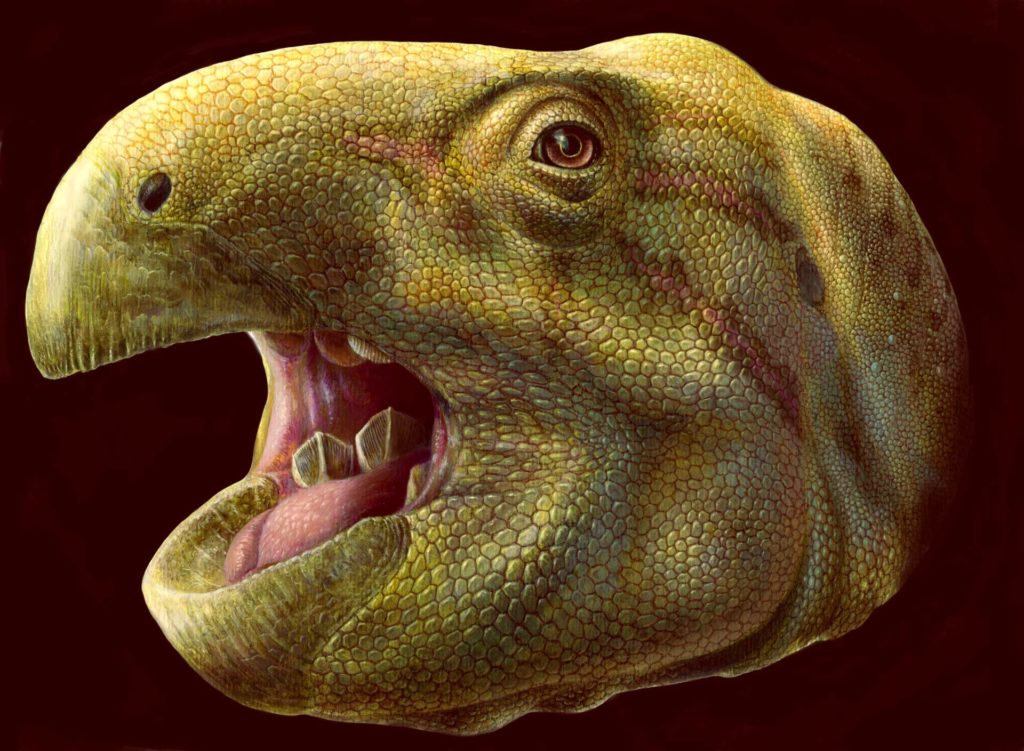@WFS,World Fossil Society,Riffin T Sajeev,Russel T Sajeev
Matheronodon provincialis was a primitive cousin of the well-known European dinosaur Iguanodon.
The ancient beast lived 70 million years ago (Late Cretaceous epoch) and was approximately 16 feet (5 m) long.
The fossilized jawbone and three teeth of the new species were discovered at the site of Velaux-La Bastide Neuve, Bouches-du-Rhône Department, southern France.
“Matheronodon provincialis had extremely enlarged teeth, up to 2.4 inches (6 cm) long and 2 inches (5 cm) wide. They operated like self-sharpening serrated scissors,” said Dr. Koen Stein, a paleontologist at Free University of Brussels, Belgium.
“Its teeth have ridged surfaces but are only covered with a thick enamel layer on one side.”
“Because the enamel is more resistant to wear than the exposed dentine, chewing actually keeps the teeth sharp.”

The fossilized jawbone of Matheronodon provincialis. Image credit: Godefroit et al, doi: 10.1038/s41598-017-13160-2.
“The denture of rhabdodontid dinosaurs (Rhabdodontidae) had evolved in a different direction than that of their contemporaries, the hadrosaurs or duck-billed dinosaurs,” said Dr. Pascal Godefroit, a paleontologist at the Royal Belgian Institute of Natural Sciences.
“Hadrosaurs had sophisticated dental ‘batteries’ formed by little teeth with which they could crush conifers.”
“Matheronodon provincialis and other Rhabdodontidae probably ate leaves of palm trees, which were abundant in Europe at that time.”
“They had to cut rather than crush the fiber-rich leaves, before they could swallow them.”
Source: Pascal Godefroit et al. 2017. Extreme tooth enlargement in a new Late Cretaceous rhabdodontid dinosaur from Southern France. Scientific Reports 7, article number: 13098; doi: 10.1038/s41598-017-13160-2 Published in Sci News.
@WFS,World Fossil Society,Riffin T Sajeev,Russel T Sajeev



 November 27th, 2017
November 27th, 2017  Riffin
Riffin 
 Posted in
Posted in  Tags:
Tags: 